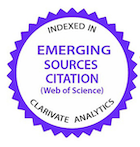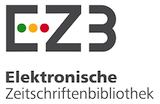SCANNING ELECTRON MICROSCOPIC INVESTIGATION OF DENTINAL TUBULES IN MONKEY DENTIN
Keywords:
Animal morphologyAbstract
The aim of the study was to investigate the number and diameter of the Cebus apella dentinal tubules. The roots of the Cebus apella teeth were examined in specific tooth locations: the apical, middle and cervical dentin. The calculations were based on the scanning electron microscope photographs of the fractured surfaces. The results showed that the average number of dentinal tubules for each location was: 74,800 tubules/mm2 for apical root dentin, 90,000 tubules/mm2 for mid-root dentin, 91,600 tubules/mm2 for cervical root dentin. The average diameter was the following: apical root dentin, 4,30µm; mid-root dentin, 4,37µm; cervical root dentin, 5,23µm. These findings demonstrate that the Cebus apella teeth are a suitable substitute for human in endodontics studies.KEY WORDS: Dentin, dentinal tubules, teeth.
Downloads
Download data is not yet available.
Published
2009-12-20
How to Cite
LIMA, Rafael Rodrigues; ARAÚJO, Leila Marques; AFFONSO, Priscilla Rocha; MARANHÃO, Kalena Melo; ANTONIAZZI, João Humberto; LAMARÃO, Suely Santos. SCANNING ELECTRON MICROSCOPIC INVESTIGATION OF DENTINAL TUBULES IN MONKEY DENTIN. Brazilian Animal Science/ Ciência Animal Brasileira, Goiânia, v. 10, n. 4, p. 1328–1331, 2009. Disponível em: https://revistas.ufg.br/vet/article/view/1128. Acesso em: 24 dec. 2025.
Issue
Section
Nota Científica
License
Copyright (c) 2009 Brazilian Animal Science/ Ciência Animal Brasileira

This work is licensed under a Creative Commons Attribution 4.0 International License.
Authors who publish with this journal agree to the following terms:
- Authors retain copyright and grant the journal right of first publication with the work simultaneously licensed under a Creative Commons Attribution License that allows others to share the work with an acknowledgement of the work's authorship and initial publication in this journal.
- Authors are able to enter into separate, additional contractual arrangements for the non-exclusive distribution of the journal's published version of the work (e.g., post it to an institutional repository or publish it in a book), with an acknowledgement of its initial publication in this journal.
- Authors are permitted and encouraged to post their work online (e.g. in institutional repositories or on their website) prior to and during the submission process, as it can lead to productive exchanges, as well as earlier and greater citation of published work (See The Effect of Open Access).



























